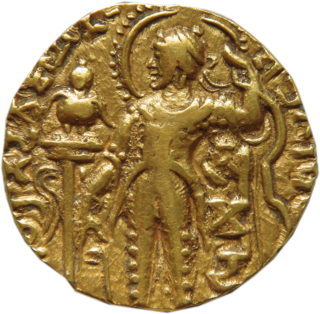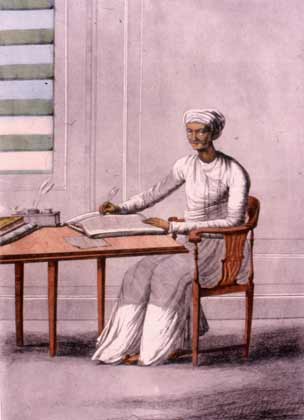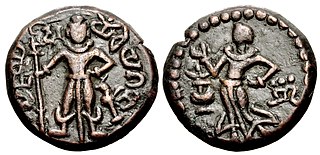
Feudalism, also known as the feudal system, was a combination of legal, economic, military, cultural, and political customs that flourished in medieval Europe from the 9th to 15th centuries. Broadly defined, it was a way of structuring society around relationships derived from the holding of land in exchange for service or labour.

Manorialism, also known as seigneurialism, the manor system or manorial system, was the method of land ownership in parts of Europe, notably France and later England, during the Middle Ages. Its defining features included a large, sometimes fortified manor house in which the lord of the manor and his dependants lived and administered a rural estate, and a population of labourers or serfs who worked the surrounding land to support themselves and the lord. These labourers fulfilled their obligations with labour time or in-kind produce at first, and later by cash payment as commercial activity increased. Manorialism was part of the feudal system.

Serfdom was the status of many peasants under feudalism, specifically relating to manorialism, and similar systems. It was a condition of debt bondage and indentured servitude with similarities to and differences from slavery. It developed during late antiquity and the Early Middle Ages in Europe and lasted in some countries until the mid-19th century.
The Gupta Empire was an ancient Indian empire on the Indian subcontinent which existed from the early 4th century CE to early 6th century CE. At its zenith, from approximately 319 to 467 CE, it covered much of the Indian subcontinent. This period has been considered as the Golden Age of India by historians, although this characterisation has been disputed by some other historians. The ruling dynasty of the empire was founded by Gupta and the most notable rulers of the dynasty were Chandragupta I, Samudragupta, Chandragupta II, Kumaragupta I and Skandagupta.

Chandragupta II, also known by his title Vikramaditya, as well as Chandragupta Vikramaditya, was the third ruler of the Gupta Empire in India. Modern scholars generally identify him with King Chandra of the Delhi iron pillar inscription.

Samudragupta (Gupta script: Sa-mu-dra-gu-pta, was the second emperor of the Gupta Empire of ancient India, and is regarded among the greatest rulers of India. As a son of the Gupta emperor Chandragupta I and the Licchavi princess Kumaradevi, he greatly expanded his dynasty's political and military power.

The Gupta script was used for writing Sanskrit and is associated with the Gupta Empire of the Indian subcontinent, which was a period of material prosperity and great religious and scientific developments. The Gupta script was descended from Brāhmī and gave rise to the Śāradā and Siddhaṃ scripts. These scripts in turn gave rise to many of the most important Indic scripts, including Devanāgarī, the Gurmukhī script for Punjabi, the Odia script, the Bengali-Assamese script and the Tibetan script.

Kayastha or Kayasth denotes a cluster of disparate Indian communities broadly categorised by the regions of the Indian subcontinent in which they were traditionally located—the Chitraguptavanshi Kayasthas of North India, the Chandraseniya Kayastha Prabhus of Maharashtra, the Bengali Kayasthas of Bengal and Karanas of Odisha. All of them were traditionally considered "writing castes", who had historically served the ruling powers as administrators, ministers and record-keepers.

Indian feudalism refers to the feudal society that made up India's social structure until the formation of Republic of India in the 20th century.

Yaudheya (Brahmi script: 𑀬𑁅𑀥𑁂𑀬) or Yoddheya Gana (Yoddheya Republic) was an ancient militant gana (confederation) based in the Eastern region of the Sapta Sindhu. The word Yaudheya is a derivative of the word from yodha meaning warriors and according to Pāṇini, the suffix '-ya', was significant of warrior tribes, which is supported by their resistance to invading empires such as the Kushan Empire and the Indo-Scythians. Rudradaman I of the Western Satraps notes in his Junagadh rock inscription that the Yaudheyas were 'heroes among all Kshatriya' and 'were loath to surrender'. They were noted as having a republic form of government, unique from other Janapadas which instead maintained monarchies.

Rājputana, meaning Land of the Rajputs, was a region in the Indian subcontinent that included mainly the present-day Indian state of Rajasthan, as well as parts of Madhya Pradesh and Gujarat, and some adjoining areas of Sindh in modern-day southern Pakistan.

Ram Sharan Sharma was an Indian historian and Indologist who specialised in the history of Ancient and early Medieval India. He taught at Patna University and Delhi University (1973–85) and was visiting faculty at University of Toronto (1965–1966). He also was a senior fellow at the School of Oriental and African Studies, University of London. He was a University Grants Commission National Fellow (1958–81) and the president of Indian History Congress in 1975. It was during his tenure as the dean of Delhi University's History Department that major expansion of the department took place in the 1970s. The creation of most of the positions in the department were the results of his efforts. He was the founding Chairman of the Indian Council of Historical Research (ICHR) and a historian of international repute.

The caste system in India is the paradigmatic ethnographic instance of social classification based on castes. It has its origins in ancient India, and was transformed by various ruling elites in medieval, early-modern, and modern India, especially in the aftermath of the collapse of the Mughal Empire and the establishment of the British Raj. It is today the basis of affirmative action programmes in India as enforced through its constitution. The caste system consists of two different concepts, varna and jati, which may be regarded as different levels of analysis of this system.

An Introduction to the Study of Indian History is a classic work of Indian historiography by Damodar Dharmananda Kosambi first published in 1956.
Feudalism in contemporary Pakistan usually refers to the power and influence of large landowning families, particularly through very large estates and in more remote areas. The adjective "feudal" in the context of Pakistan has been used to mean "a relatively small group of politically active and powerful landowners." "Feudal attitude" refers to "a combination of arrogance and entitlement." According to the Pakistan Institute of Labor Education and Research (PILER), five percent of agricultural households in Pakistan own nearly two-thirds of Pakistan's farmland.

Feudalism as practiced in the Kingdoms of England during the medieval period was a state of human society that organized political and military leadership and force around a stratified formal structure based on land tenure. As a military defence and socio-economic paradigm designed to direct the wealth of the land to the king while it levied military troops to his causes, feudal society was ordered around relationships derived from the holding of land. Such landholdings are termed fiefdoms, traders, fiefs, or fees.

Bengali Kayastha is a Bengali Hindu caste originated from the Bengal region of Indian subcontinent, and is one of the main subgroups of the Kayastha community. The historical caste occupation of Kayasthas throughout India has been that of scribes, administrators, ministers and record-keepers; the Kayasthas in Bengal, along with Brahmins and Baidyas, are regarded among the three traditional higher castes that comprise the "upper layer of Hindu society." During the British Raj, the Bhadraloks of Bengal were drawn primarily, but not exclusively, from these three castes, who continue to maintain a collective hegemony in West Bengal.
Marxist historiography, or historical materialist historiography, is an influential school of historiography. The chief tenets of Marxist historiography include the centrality of social class, social relations of production in class-divided societies that struggle against each other, and economic constraints in determining historical outcomes. Marxist historians follow the tenets of the development of class-divided societies, especially modern capitalist ones.
Brahmadeya was tax free land gift either in form of single plot or whole villages donated to Brahmanas in the early medieval India. It was initially practiced by the ruling dynasties and was soon followed up by the chiefs, merchants, feudatories, etc. Brahmadeya was devised by the Brahmanical texts as the surest mean to achieve merit and destroy sin.

Anurag Sharma is an Indian physicist and a professor at the department of physics of the Indian Institute of Technology Delhi. He is known for his pioneering researches on optoelectronics and optical communications and is an elected fellow of all the three major Indian science academies viz. Indian Academy of Sciences, Indian National Science Academy and National Academy of Sciences, India as well as Indian National Academy of Engineering. The Council of Scientific and Industrial Research, the apex agency of the Government of India for scientific research, awarded him the Shanti Swarup Bhatnagar Prize for Science and Technology, one of the highest Indian science awards for his contributions to Engineering Sciences in 1998.














